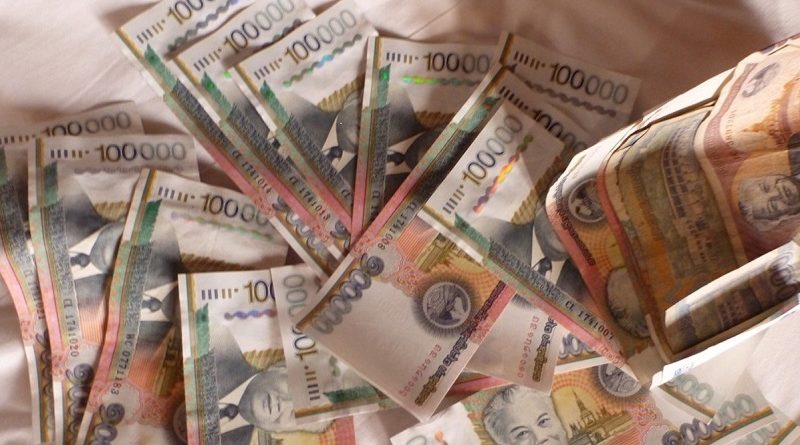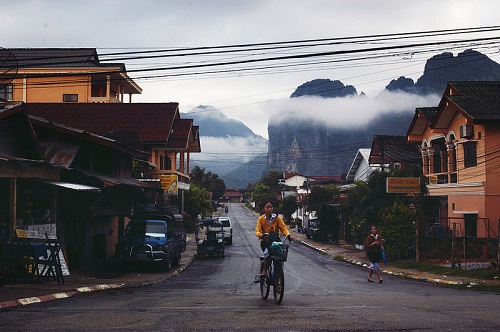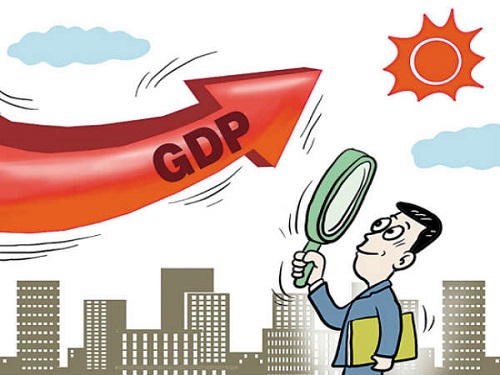Little Laos Teeters Towards Big Debt Crisis
Source: Asia Times
If official figures are to be believed, Laos has not been severely affected by the Covid-19 global pandemic, with a mere 19 cases and no deaths.
But a lockdown announced in late March has hit the economy hard, prompting Fitch Ratings to revise its “outlook” for the small landlocked country from “stable” to “negative” in an unusually in-depth recent report on the opaque government’s finances released on May 15.
Fitch forecasted that Laos’ gross domestic product (GDP) growth will slow to just 0.5% this year, down from an estimated 5.5% in 2019. Although Laos’ lifted some lockdown restrictions in early May, “remaining border restrictions…could disrupt exports and are driving a large drop in tourism inflows and related economic activity this year,” Fitch concluded.
Hydro-power projects and mining operations have also been disrupted at a time US$900 million in public external debt-service payments will come due over the remainder of the year. Those high debts weigh heavy against foreign exchange reserves of just $1 billion, as officially recorded at the beginning of the Covid-19 crisis in March.
Fitch said that Laos’ foreign reserves are “inadequate” considering “its managed currency regime, large import bill, and external debt-servicing requirements.”

Roughly $1 billion in foreign debt servicing will come due annually from 2021-2023, while the Bank of Lao has perhaps tried to ease the blow of those repayments by allowing the local kip to depreciate around 4% against the dollar in the last year.
But a rising current account deficit, forecast by Fitch to rise from 7.6% of GDP this year from just 4.5% in 2019 due to a virus-caused collapse in tourism receipts, will also hamper the Lao government’s ability to pay its debts in a timely fashion and increase its dependence on foreign investment.
Fitch said that the government has lined up commerical bank loans to help meet external payments in upcoming months, and that it is expected to “roll over” much of the $200 million in bank loans it has outstanding with various financial institutions that will come due in September.

There are certain reasons to be optimistic. Work on the China-Laos railroad and Vang Vieng-Vientiance highway is continuing despite Covid-19, the disruption of some big mining projects is believed to be only temporary and the government is moving forward with plans to build the country’s seventh largest hydro-electric dam on the Mekong river.
But that also means severe impacts on an already fragile environment and an even heavier dependence on China, the country’s main foreign investor and business partner. Some 40% of the railroad’s total US$6-7 billion cost will be shouldered by the two sides’ governments, with Vientiane paying 30% and Beijing 70%.
Private and state enterprises in China and Laos will finance the remaining 60%. But in the increasingly likely event that Vientiane cannot pay its share, amounting provisionally to $840 million, China has agreed to provide a $500 million low interest loan.
The long and the short of it is that the railroad will not only tie Laos closer to China in terms of travel time but also through greater financial dependence.
The China-Laos railway is an important link in Chinese President Xi Jinping’s Belt and Road Initiative and as such is strategically important for China. Once the line is extended to Thailand, it will serve as a conduit for trade not only into Laos but the rest of mainland Southeast Asia as well.

The latest addition to Laos’s hydroelectric power projects, the 684-megawatt dam at Sanakham, 155 kilometer north of the capital, will be built by the Datang Sanakham Hydropower Company, a subsidiary of the Datang International Power Generation, one of China’s five largest state-owned power producers.
The hydroelectric power station will, according to the plan, be operational by 2028 and the power generated will be sold mostly to neighboring Thailand. Whether that is viable remains to be seen as Thailand is not facing any shortage of electricity and the project is bound to impact the livelihood of people living in the affected area.
It will also impact the flow of the Mekong river, which is already a downstream issue in Thailand, Cambodia, and Laos after a number of dams have been built in Laos — and China — on the river’s upper reaches and its tributaries.
The French multinational investment bank and financial service company Société Générale pointed out in a report in May that Laos’ public finances were fragile even before the Covid-19 crisis, with a debt-to-GDP ratio of 58% in 2019.
While not particularly high compared with regional peers, 8o% of it is denominated in foreign currency and owed externally, with almost half of it held by China.
At the same time, as the influx of Chinese capital plays a major role in the country’s development projects, there are also internal obstacles such as a lack of skilled labor, poor-quality infrastructure and endemic corruption. (Laos ranked 130th of 180 countries in Transparency International’s corruption perception index in 2019).

Hence thousands of Chinese laborers and technicians have been hired for the railroad project and the hundreds of millions of dollars China is pouring into Laos are bound to alter the entire socio-economic structure of the small, poor — and therefore vulnerable — country, sources in Vientiane fear.
Société Générale points out that there is only one legal political party in the country, the ruling Lao People’s Revolutionary Party, which controls most of the political and economic aspects of society. The level of education is low and living conditions in rural areas, home to 65% of the population, are described as “precarious.”
There is no real political opposition which, in turn, means no public watchdogs can raise questions about corruption, abuse of power and the validity of development projects. Fitch points out that Laos “scores below the ‘B’ median for World Bank governance indicators, reflecting weaknesses in institutional capacity to control corruption.”
Laos’ growth has traditionally relied on the exploitation of natural resources, mining and hydroelectric power projects which, before the Covid-19 crisis, motivated the government to focus on reforms to support what the World Bank in an April survey termed “greener more exclusive growth.”
But how that could be done in the present Covid-19 environment is unclear. On the contrary, as indicators show, the virus crisis is bound to accelerate Laos’ already heavy dependence on China. Thailand and Vietnam have long been two other top investors in Laos, but they now have other priorities with more pressing economic problems at home.
The Lao economy may rebound if the Covid-19 crisis is over by 2021, driven by more hydropower construction activity, increased gold exports and renewed tourism inflows, Fitch says. But that growth will come at a heavy sovereign price.

Even without the virus crisis, Laos would have been changed forever when trains on the China-Lao railroad eventually ply between Yunnan’s provincial capital Kunming and Vientiane. The country has never before had such a modern and technologically hi-end link to the outside world.
But as with the railroad — and Chinese loans and investment in all sectors of the economy — any future development will be more or less directed by Chinese interests. That means questions will rise about the country’s economic and political independence from Beijing.
But as the Covid-19 crisis bites, growth slows and financial obligations rise, Laos has few alternatives but to seek more assistance from its powerful, northern neighbor.




